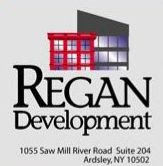
Del-Sano Contracting Corp. Honored with New York Construction's'Best of 2009' Award for Garden Street Lofts
September 21, 2009, Hoboken, NJ - New York Construction has awarded Del-Sano Contracting Corp. (http://www.delsano.com/) an Award of Merit in the Green Building category as part of its "Best of 2009 Awards" for Garden Street Lofts (http://www.gardenstreetlofts.com/). Garden Street Lofts is a luxury residential building in Hoboken, New Jersey. Del-Sano served as the general contractor for the $16.8-million redevelopment project, which was completed in February 2009.
New York Construction's "Best of Awards" is an annual awards program dedicated to honoring the region's best projects and the companies that design and build them. Award criteria included Teamwork and Project Management, Safety, Innovation, Contribution to the Community or Industry, Overcoming Unique or Difficult Challenges, Construction Quality and Craftsmanship, and Function and Aesthetic Quality of the Design.
Garden Street Lofts was redeveloped from an existing 42,888-square-foot, structural steel, concrete and masonry, former coconut processing and storage warehouse that was erected in 1919. Del-Sano built a new 35,054-square-foot, seven-story structural steel and concrete addition with gauged metal-perimeter wall framing and a Zinc rain screen façade. The addition rises above and is linked to the restored cast-in-place concrete building at the original fifth floor roof level. The mixed-use complex includes 30-luxuriously appointed one-, two-, and three-bedroom, loft-style condominiums. Also, at ground level there is a total 7,500 square feet of open floor plan that is suited for prime retail space facing 14th and Garden Streets.
The Garden Street Lofts is awaiting certification as the first Silver LEED luxury residential hi-rise development in New Jersey. The building uses 24% less energy in heating cooling and lighting, as well as 20% less water than a traditional building, and 100% of its electrical power is generated from wind and other renewable resources.
In addition to the many sustainable and energy efficient elements of the building, Del-Sano's handling of the construction process itself, as well as the worksite were noteworthy. "The challenges of bringing this project to life were many, not the least of which was how to preserve, recycle and transform architectural history by converting the Hostess coconut-processing warehouse into a state-of-the-art, high performance 'green' building while initiating creative cost containment measures," explained Angelo Del Russo, Founder and CEO of Del-Sano Contracting.
"Preserving an old structure while wrapping a new structure around and above it is no easy task. Another preservation challenge was to make certain the integrity of the walls and structure remained intact for restoration and rehabilitation," noted Del- Russo. "The restriction of the existing lot size and position also presented challenges, particularly for structural design and building methods. But ultimately, we were able to work around these challenges, afford the client some significant cost savings through our building methodologies, and deliver a beautiful building to the client that stands as a model for sustainable residential development in New Jersey."
Project team members were:
Architect: Sharples Holden Pasquarelli Architects, New York, NY
MEPS Engineer: Buro Happold, New York, NY
Project Financing: TD Bank, Ramsey, NJ
Marketing Agent: Hudson Place Realty, Hoboken, NJ
LEED Commissioning Agent, Dome-Tech Group, Edison, NJ
About Bijou PropertiesGarden Street Lofts was developed by Bijou Properties (http://www.bijouproperties.com/), which has already received recognition for successfully redeveloping urban properties and for the adaptive re-use of a former industrial and warehouse building along the Hudson River waterfront. The company is committed to incorporating sustainable design and construction into its projects.
About Del-Sano Contracting Corp. Del-Sano Contracting Corp. (http://www.delsano.com/), a member of the U.S. Green Building Council (USGBC), is a skilled and qualified builder of LEED-registered projects. The firm is committed to setting new standards for sustainable development through ongoing education and training, responsible use of natural resources, and the integration of principles of sustainable development in its day-to-day activities and client projects.
Established in 1975, Del-Sano provides full-service, commercial general construction and construction management services to a distinguished and diverse client base located throughout the New York metropolitan area. The firm, which ranks among the 25 largest general contractors in New Jersey, is engaged in the construction and development of commercial, institutional, retail, multifamily (including senior, affordable and luxury housing) high-rise, multi-level and framed structures, as well as recreational facilities and historic renovation projects.
September 21, 2009, Hoboken, NJ - New York Construction has awarded Del-Sano Contracting Corp. (http://www.delsano.com/) an Award of Merit in the Green Building category as part of its "Best of 2009 Awards" for Garden Street Lofts (http://www.gardenstreetlofts.com/). Garden Street Lofts is a luxury residential building in Hoboken, New Jersey. Del-Sano served as the general contractor for the $16.8-million redevelopment project, which was completed in February 2009.
New York Construction's "Best of Awards" is an annual awards program dedicated to honoring the region's best projects and the companies that design and build them. Award criteria included Teamwork and Project Management, Safety, Innovation, Contribution to the Community or Industry, Overcoming Unique or Difficult Challenges, Construction Quality and Craftsmanship, and Function and Aesthetic Quality of the Design.
Garden Street Lofts was redeveloped from an existing 42,888-square-foot, structural steel, concrete and masonry, former coconut processing and storage warehouse that was erected in 1919. Del-Sano built a new 35,054-square-foot, seven-story structural steel and concrete addition with gauged metal-perimeter wall framing and a Zinc rain screen façade. The addition rises above and is linked to the restored cast-in-place concrete building at the original fifth floor roof level. The mixed-use complex includes 30-luxuriously appointed one-, two-, and three-bedroom, loft-style condominiums. Also, at ground level there is a total 7,500 square feet of open floor plan that is suited for prime retail space facing 14th and Garden Streets.
The Garden Street Lofts is awaiting certification as the first Silver LEED luxury residential hi-rise development in New Jersey. The building uses 24% less energy in heating cooling and lighting, as well as 20% less water than a traditional building, and 100% of its electrical power is generated from wind and other renewable resources.
In addition to the many sustainable and energy efficient elements of the building, Del-Sano's handling of the construction process itself, as well as the worksite were noteworthy. "The challenges of bringing this project to life were many, not the least of which was how to preserve, recycle and transform architectural history by converting the Hostess coconut-processing warehouse into a state-of-the-art, high performance 'green' building while initiating creative cost containment measures," explained Angelo Del Russo, Founder and CEO of Del-Sano Contracting.
"Preserving an old structure while wrapping a new structure around and above it is no easy task. Another preservation challenge was to make certain the integrity of the walls and structure remained intact for restoration and rehabilitation," noted Del- Russo. "The restriction of the existing lot size and position also presented challenges, particularly for structural design and building methods. But ultimately, we were able to work around these challenges, afford the client some significant cost savings through our building methodologies, and deliver a beautiful building to the client that stands as a model for sustainable residential development in New Jersey."
Project team members were:
Architect: Sharples Holden Pasquarelli Architects, New York, NY
MEPS Engineer: Buro Happold, New York, NY
Project Financing: TD Bank, Ramsey, NJ
Marketing Agent: Hudson Place Realty, Hoboken, NJ
LEED Commissioning Agent, Dome-Tech Group, Edison, NJ
About Bijou PropertiesGarden Street Lofts was developed by Bijou Properties (http://www.bijouproperties.com/), which has already received recognition for successfully redeveloping urban properties and for the adaptive re-use of a former industrial and warehouse building along the Hudson River waterfront. The company is committed to incorporating sustainable design and construction into its projects.
About Del-Sano Contracting Corp. Del-Sano Contracting Corp. (http://www.delsano.com/), a member of the U.S. Green Building Council (USGBC), is a skilled and qualified builder of LEED-registered projects. The firm is committed to setting new standards for sustainable development through ongoing education and training, responsible use of natural resources, and the integration of principles of sustainable development in its day-to-day activities and client projects.
Established in 1975, Del-Sano provides full-service, commercial general construction and construction management services to a distinguished and diverse client base located throughout the New York metropolitan area. The firm, which ranks among the 25 largest general contractors in New Jersey, is engaged in the construction and development of commercial, institutional, retail, multifamily (including senior, affordable and luxury housing) high-rise, multi-level and framed structures, as well as recreational facilities and historic renovation projects.

















